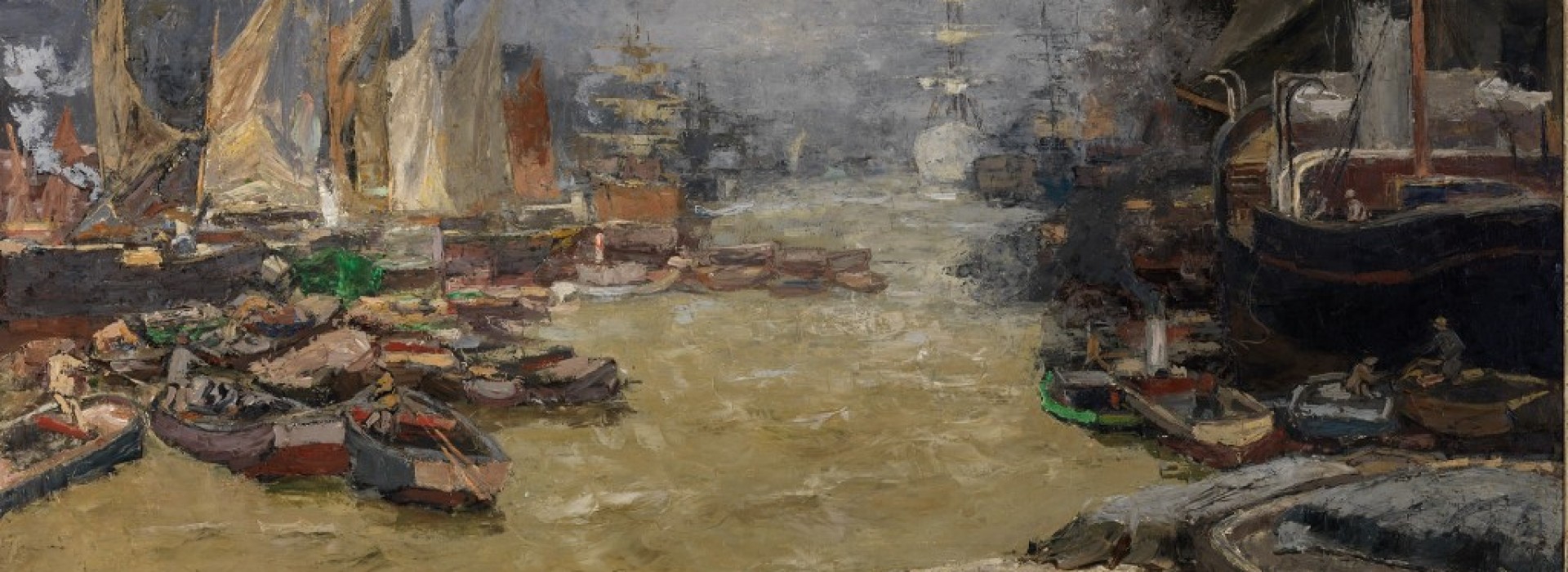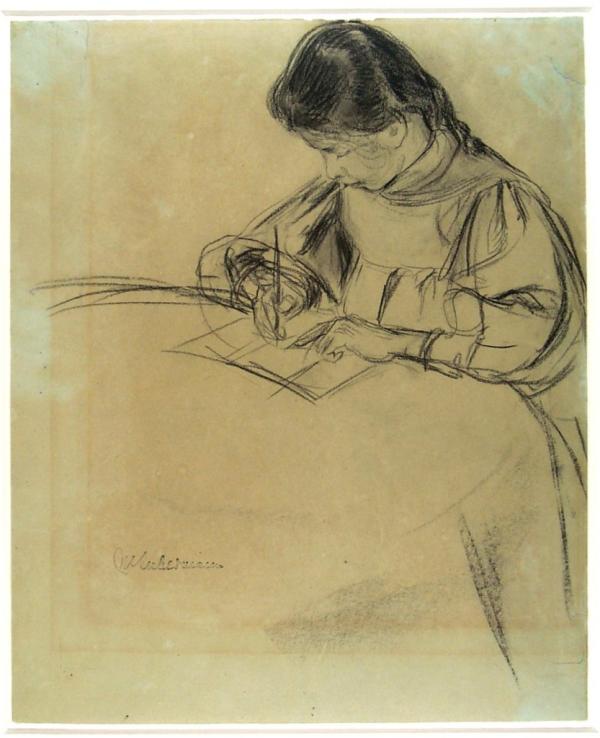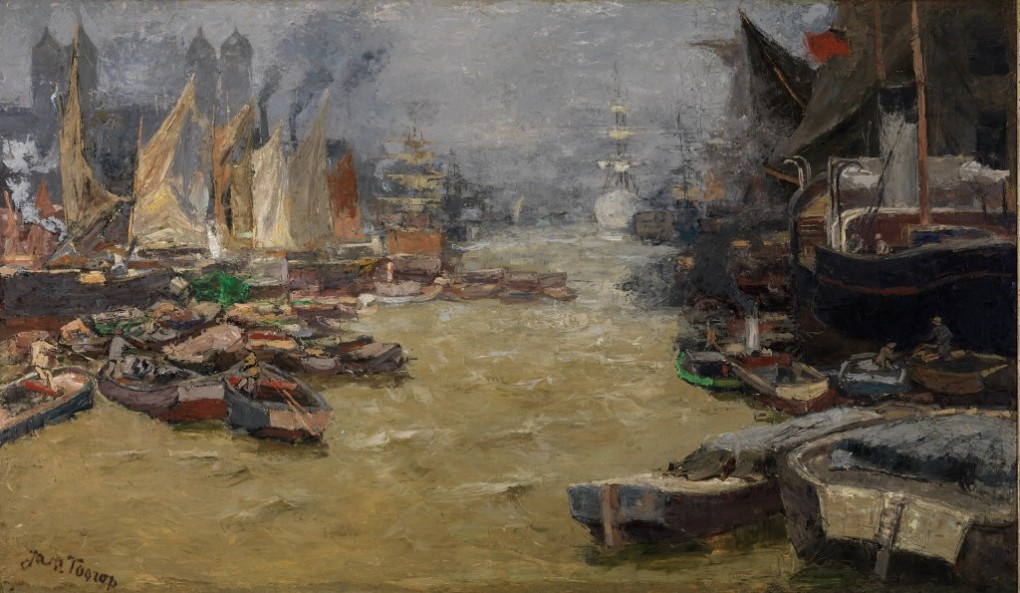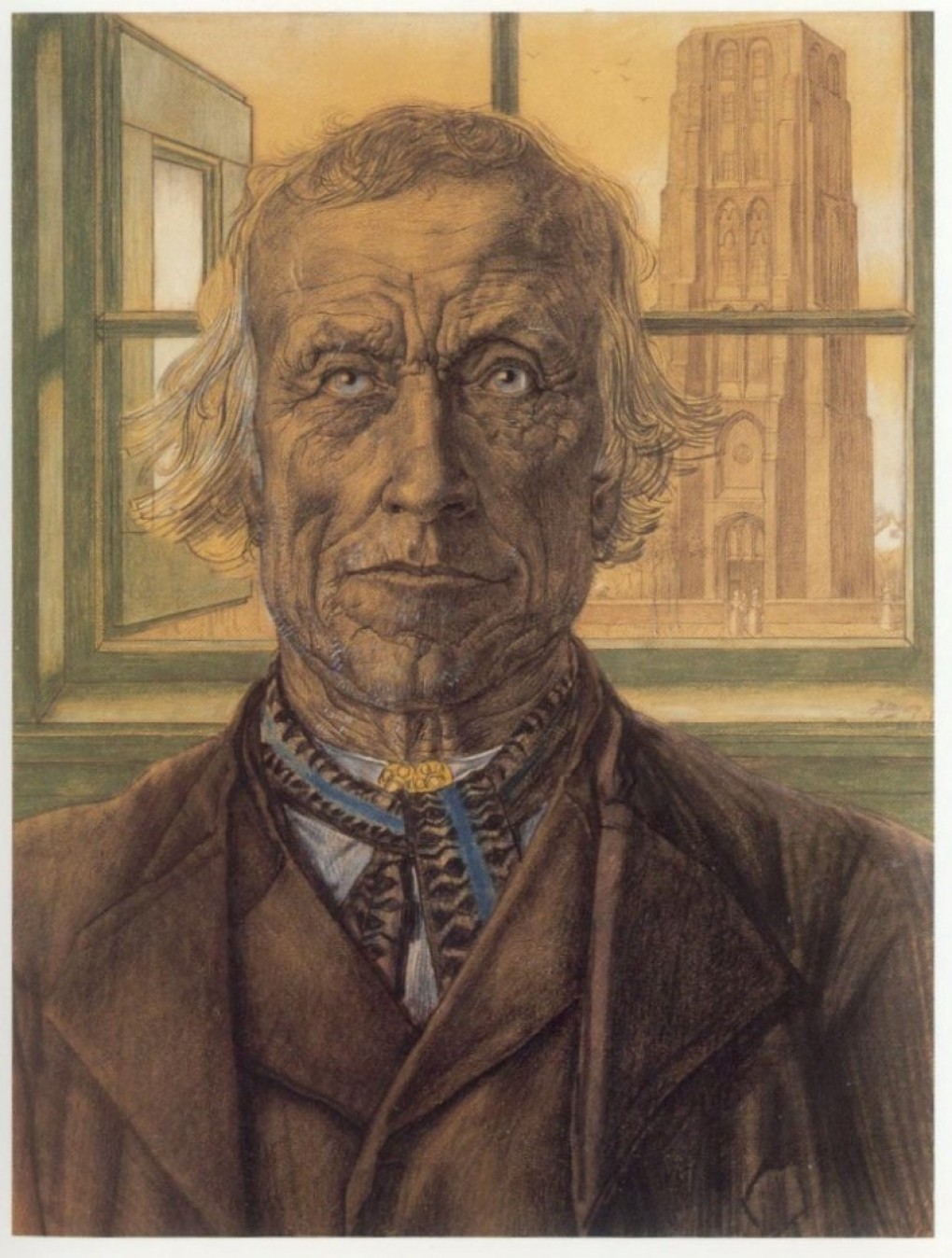Restitution of the drawing ‘Faith in God’ and the painting 'The Thames' by Jan Toorop
Faith in God
‘Faith in God’ (1907) is a coloured drawing by the major Dutch artist Jan Toorop (1858-1928), acquired by the museum in 1943 as a gift from two trustees of the museum foundation. It was bought from the art dealer Herman d’Audretsch in The Hague, who had acquired it from a German dealer. The drawing came onto the market after the German occupying forces had confiscated the belongings of Ernst Flersheim (1862- 1944) in Amsterdam in 1942. Flersheim was a German Jew who had fled to the Netherlands in March 1937. He had been a friend of Toorop’s since 1905 and owned several of his works. In 1943 he and his wife were arrested during a raid in Amsterdam and sent to the Westerbork transit camp.
In 1954 the board of the museum foundation dismissed an initial claim to the drawing by the heirs of Ernst Flersheim; a renewed claim in 1999 was also denied. It was only after a long tussle that the foundation finally returned the drawing to the heir, Walter Eberstadt, upon receipt of 2000 guilders, which was probably the sum that the two donors had paid for it in 1943. That sum bears no relation to the present market value of the work, which is many times greater.
De Thames
‘The Thames’ (1885), an early work by the important Dutch artist Jan Toorop (1858-1928), was sold to the art dealer G.J. Nieuwenhuizen Segaar in The Hague by the owner, Ernst Flersheim (1862-1944), who was a friend of the artist and owned several of his works. Flersheim was a German Jew who had fled to the Netherlands in March 1937, and the transaction took place shortly afterwards. The painting was in London at the time and was sent to the Netherlands after the sale. It was then bought from the dealer by Museum Boijmans together with a painting by Bart van der Leck and one of the museum’s first modern art acquisitions. The dealer paid Flersheim 3500 guilders for the picture, and the museum paid 6000 guilders for the two works.
In 2005, the heirs of Ernst Flersheim, the City of Rotterdam and Museum Boijmans Van Beuningen decided jointly to apply for a binding opinion by the Restitutions Committee regarding the dispute between the city and the heirs of Ernst Flersheim over Toorop’s ‘The Thames’. The Restitutions Committee gave its advice on 12 March 2008. The committee noted that the owner sold the work as a result of circumstances directly related to the Nazi regime. It also judged that neither Museum Boijmans nor the City of Rotterdam had acted carelessly over the sale.
The committee’s binding opinion reads as follows. ‘The City of Rotterdam is obliged to restore the painting ‘The Thames’ to the heirs of Ernst Flersheim on receipt of a sum of €30,397.50 from those heirs.’
The price of more than €30,000 arrived at by the committee is the indexed price for which Flersheim sold the work in 1937. It bears no relation to the present market value of the work, which is many times greater.
The Restitutions Committee arrived at its recommendation after considering all the facts of the case. All the parties involved were pleased that the long-running affair had been settled. After deliberating on the matter the City of Rotterdam and Museum Boijmans Van Beuningen returned the painting at the beginning of 2009 to Mr Flersheim’s heirs: Mr Walter A. Eberstadt of New York and his sister, Mrs A.J. Collier-Eberstadt of London. The drawing 'Faith in God' was returned to the heirs in 2001.
Research published
The museum has documented the history of these two works of art in detail. It commissioned research by Anita Hopmans, Chief Curator of Modern Art at the Netherlands Institute for Art History (RKD), whose findings were published in the report Disputed Ownership. On the Provenance of Two Works by Jan Toorop in the Boymans Museum: the Painting Titled The Thames (1885) and the Drawing Known as Faith in God (Godsvertrouwen) (1907), December 2006.
See also:
A. Hopmans, Acquisition and Restitution: the Toorop Case, Rotterdam (Boijmans Studies) 2008.















